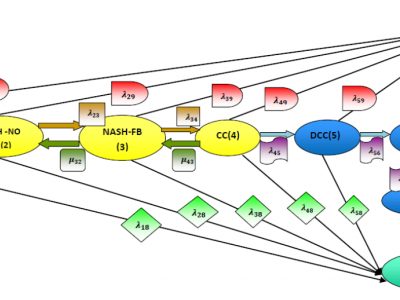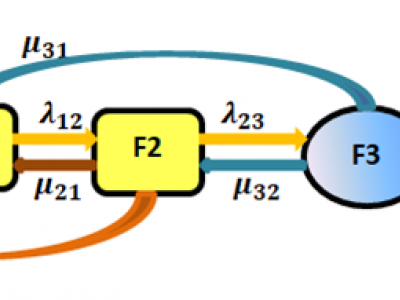Datasets
Standard Dataset
CTMC Analyzing NAFLD Progression (Small Model)
- Citation Author(s):
- Submitted by:
- Iman Attia
- Last updated:
- Sat, 03/05/2022 - 19:36
- DOI:
- 10.21227/az1b-x326
- Data Format:
- License:
 167 Views
167 Views- Categories:
- Keywords:
Abstract
I tackle the problem of non-alcoholic fatty liver disease (NAFLD) from the statistical point of view. Using the multistate model, in the form of the continuous time Markov chains, helps the statistical analysis of the progression of the disease over time. The simplest model of the health-disease-death process is applied to the NAFLD. The model is composed of 8 pdfs and 5 rates that need to be estimated. Maximum likelihood and quasi-Newton methods are applied to estimate the transition rates among states. Exponentiation of this estimated rate matrix yields the transition probability matrix. This transition probability matrix can also be estimated from solving the forward Kolmogorov differential equations. Testing time homogeneity of this CTMC that model the disease process is also discussed by the author. This can be achieved by finding an empirical probability matrix that equates the exponentiation of the transition rate matrix, which is thoroughly investigated . Also the embedding problem that may arise when trying to find the transition rate matrix from the transition probability matrix of the corresponding discrete time model is clarified. Testing Markovian property of the chain is also presented. Some remarks are also highlighted as regard the state probability distribution and the stationary probability distribution.
Detailed information is contained inside the word file .
More from this Author
Documentation
| Attachment | Size |
|---|---|
| 350.48 KB | |
| 995.55 KB |









Comments
Studying natural history of disease during which individuals start at one initial state then as time passes the patients move from one state to another, can be investigated by using multistate Markov chains. Evolution of the disease over different phases can be monitored by taking repeated observations of the disease stage at pre-specified time points following entry into the study. Disease stage is recorded at time of observation while the exact time of state change is unobserved. NAFLD is a multistage disease process and it is modeled as 4 states in this dataset.